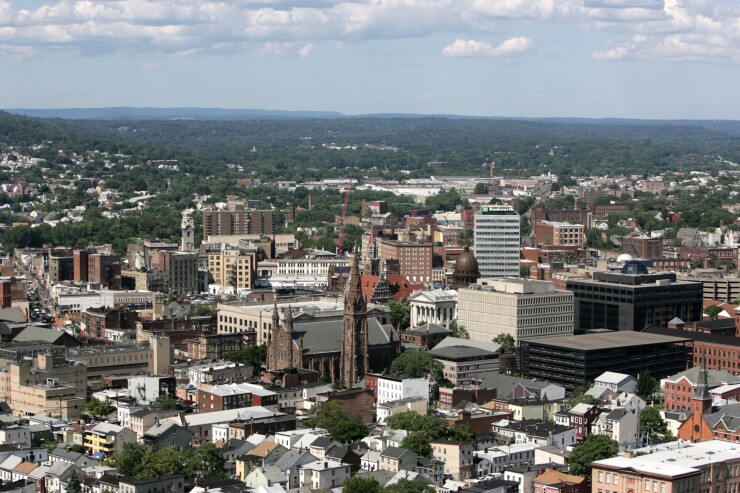New Jersey’s partial restoration of transitional aid will help ease budget strains for some of the state's distressed cities and local governments, according to Moody’s Investors Service.
The New Jersey Department of the Treasury in October released nearly half of $235 million in spending that Gov. Phil Murphy placed in reserve in July because of concerns about projected revenues for his $38.7 billion 2020 fiscal year budget.
The restored funding included $53.7 million of $104.8 million in transitional aid that had been suspended, which Moody’s analyst Doug Goldmacher noted had created fiscal challenges for fiscally distressed municipalities throughout the state.

“While the suspended aid is a small fraction of both the state’s budget and of regular municipal aid, the recipient municipalities are among the most distressed in New Jersey and the potential loss of transitional aid has been a source of significant budgetary stress,” Goldmacher wrote in a report Wednesday. “The potential loss of this need-based temporary financial relief was a material credit negative for the nine municipalities that rely on it and its partial restoration is correspondingly positive.”
While much of the transitional aid was unfrozen, nearly half remains suspended, which Goldmacher said remains a risk for some of the more distressed localities like the cities of Paterson and Union City. Moody’s rates both Paterson and Union City at Baa2 with stable outlooks.
Paterson received $33 million in transitional aid in 2018, which equated to 12% of revenue, or 319% of fund balance. Goldmacher said Union City would likely face a bigger problem from the continued suspension of the partial transitional aid because the city is grappling with a fund balance of negative $7.2 million stemming from sharp one-time rises in healthcare costs.
“The release of the $53.7 million will ease the budgetary strain on municipalities in receipt of transitional aid, although since these municipalities frequently have razor-thin margins, failure to restore the entire amount will likely still lead to the need for draconian cost-cutting or large tax increases,” Goldmacher said. “If the remaining aid is not released, municipalities will have only a few tools to address imbalances.”
Other local governments affected by the transitional aid uncertainty are Atlantic City, Trenton, Camden, Salem, the township of Nutley, and the boroughs of Penns Grove and Seaside Heights. Moody’s rates Atlantic City and Salem general obligation bonds in junk territory; Atlantic City is B2 with a positive outlook and Salem isBa3 with a negative outlook. It does not rate Camden, Penns Grove and Seaside Heights.
Goldmacher noted that transitional aid is never used to directly back bond issuances making risks more tied to operations and not debt service payments, which must be budgeted for separately.
Murphy implemented the $235 million spending freeze via executive order after the state legislature approved a budget just before the July 1 deadline that he said was not in line with his administration’s revenue expectations for the 2020 fiscal year. Treasury officials announced on Oct. 17 that $114 million of the spending items can be released due to an improved 2019 year-end fund balance along with expectations that $50 million will be achieved through other budget-saving efforts such as the consolidating Department of Correction youth facilities.
“I am pleased that we are able to release a significant portion of the funding that had been placed into reserve this summer,” State Treasurer Elizabeth Maher Muoio said in a statement. “We will continue to closely monitor revenue collections and additional savings initiatives booked in the budget and hope to be able to release additional funds as expeditiously as possible.”
The state has set aside roughly $10 million in a separate account that was already dedicated to transitional aid, which Goldmacher noted would have been sufficient to cover most of the necessary funding for the impacted cities through the end of December. Goldmacher said the $10 million coupled with the $53.7 million released in October provides the state and the municipalities time to make necessary adjustments.
“If the state does not release the remainder of the funds, it has the ability to make emergency loans in case of dire cash flow issues, though the newly released funds render this eventuality far less probable,” Goldmacher said.





